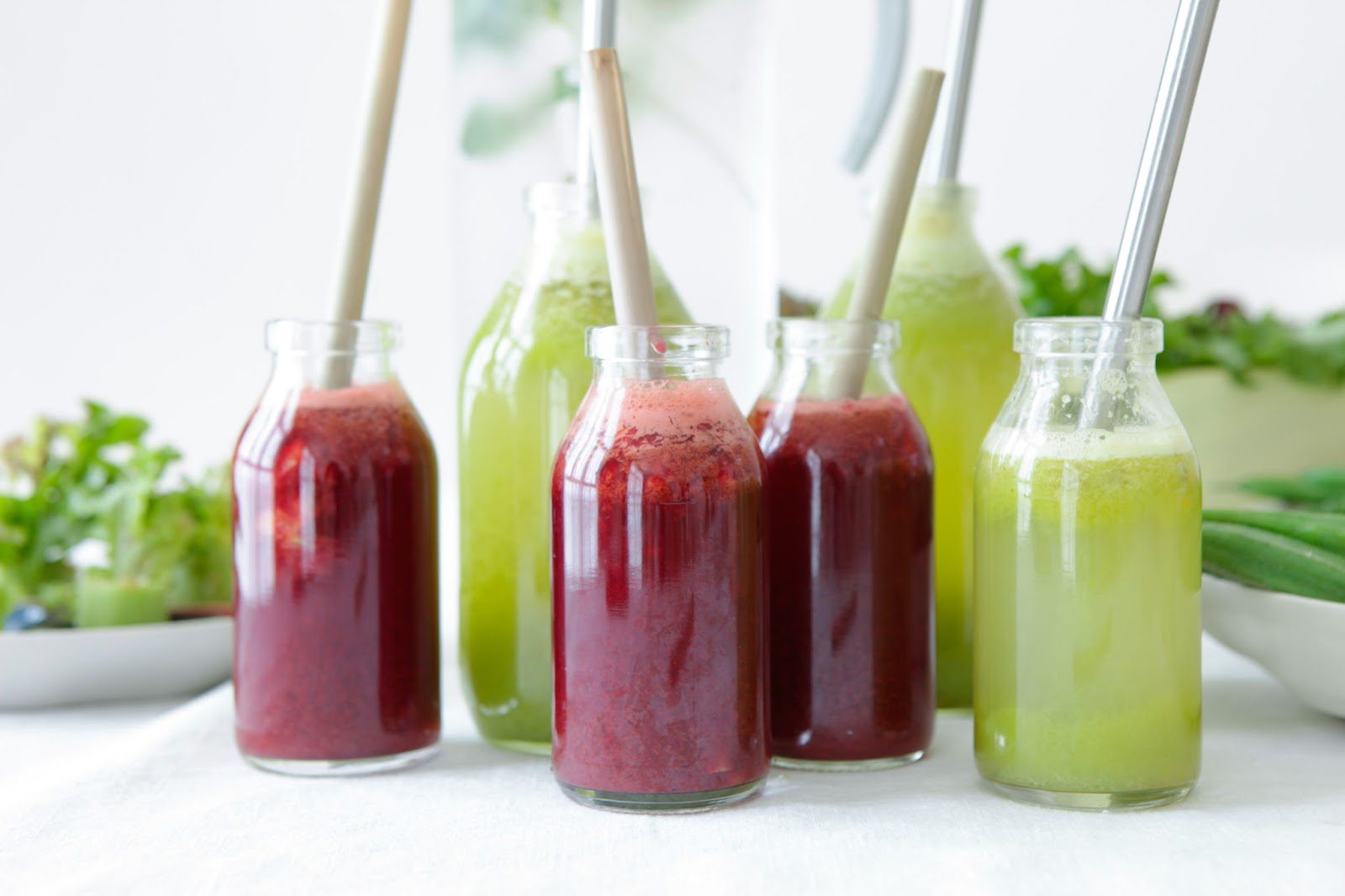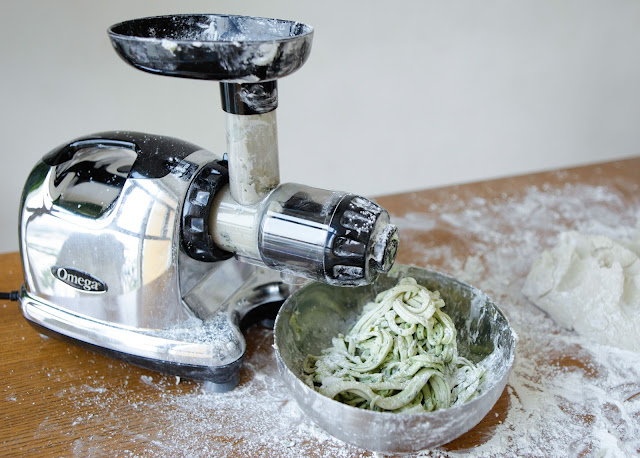
Benefits Of Juicing – What Juicer To Buy And Juicing Recipes
It’s taken me a long while to start juicing for various reasons, but since my health went downhill a few months ago I had to try something new, so many people I knew were juicing and raving about it. I finally unpacked my juicer after 6 months in the box and hoped for some miracle that would fix my chronic fatigue and other health issues. The miracle didn’t happen, but some great things did happen.
 |
| Benefits of Juicing – How it helped me |
I found myself with more energy, more satisfied with my limited diet of bone broth soups and salads. I was able to consume more nutrient rich juices that I could eat in salads. It was fun, delicious and awful at times when I used the wrong combinations (like too much bitter melon). I had to also work out the right balance, otherwise it would go right through me due to my struggling gut (not nice if you need to leave the house).
Benefits of Juicing:
- Juicing helps your body absorb the nutrients especially if your gut is impaired as the vegetables are ‘pre-chewed’ releasing all the nutrients and vitamins
- You can consume a lot more vegetables with juicing than eating, I cannot cope with eating the recommended 8 serves of vegetables as my gut is struggling, juicing allows me to do this easily (I still aim for a plate of salad a day)
- Promote weight loss – Juicing isn’t a meal replacement, but it does make you full and your body satisfied so you eat less, crave less and you’re still keeping up your vitamin and mineral intake with the varied vegetable juices
- Boost your immune system, according to Dr Mercola, raw juice also contains biophotonic light energy, which can help revitalize your body
- Increase your energy – as vegetable juicing provides a boost in nutrients and alkalises the body, you can feel instantly energised as your PH levels are optimised. This has been the main benefit I have felt and has since got me addicted to juicing!
- Clearer and brighter skin. Good skin does come from within and I have been so pleased that my friends have noticed a new glow!
The Don’ts of Juicing:
Some of the things I read to be careful with when juicing, were the reasons why it took me so long to start, I was a little afraid of the unknown and now that I have started, I can’t imagine going back to life without my juices. The Don’ts of juicing are pretty easy to follow:
- Be careful of the sugar content, you want to juice vegetables not fruit and limit vegetables with high sugar content like carrot and beetroot
- Be careful of vegetables with high oxalates which can cause issues in the body including kidney stones (such as spinach and swiss chard)
- Don’t gulp your juice – chew your juice. The chewing motion stimulates the salivary glands and saliva plays an important role with initiating the digestion process. I make a few chewing motions holding the juice in my mouth and take the time to finish my glass, it also allows you to enjoy all the flavours!
- Careful with cruciferous vegetables such as broccoli, brussel sprouts, cabbage etc as they can be a problem for people with thyroid issues and personally if it’s a vegetable I would normally cook, I wouldn’t juice it
- What about fibre? juices actually contain soluble fibre and as you shouldn’t be replacing your meals with juices, you can still get your recommended fibre intake with your meals (see more here)
The Do’s of Juicing:
 |
| Choose organic!! |
- Make sure your produce is organic whenever possible, or wash and soak your vegetables in vinegar and water to remove as much pesticides as possible (and peel the ones you can if not organic)
- You can juice most of your vegetables that you can eat raw including the peel, except beetroot, peel the beetroot unless you like dirt juice…
- Rotate your veggies! this should be a general rule with all foods but especially if you are trying to heal your gut and body, it’s important to change the combinations so you don’t develop a sensitivity to any one food, it also helps make sure you get varied nutrients and vitamins
- Listen to your body
- Go slow – my biggest mistake was trying to do a full glass of juice, I would suggest a small shot to start with if you have a sensitive gut and when it is tolerated well increase the amount
- Juice enough to consume immediately and avoid storing your juice to maximise the vitamin content, if you have a masticating juicer, you can store it in a sealed glass bottle for the next day which is great as sometimes life does get busy (scroll down for more about masticating juicers)
- Clean your juicer after each juice or end of the day to avoid build up and mould
What Is The Best Juicer To Buy?
Masticating or Slow juicers, uses a grinder to grind and crush the fruit or vegetable with a slow spinning motion enabling better extraction of all the vitamins and nutrients. You will see a much drier pulp which means you get the most out of your produce, there is less separation and foam. The taste is stronger as you’re able to extract more out of your fruit and vegetables. You can store this juice in the fridge until the next day without losing all the nutrients. I have two juicers and can recommend both the Omega J8006 and Kuvings B6000S.
 |
| Omega J8006 Masticating Slow Juicer (also has additional nozzles for making noodles) |
 |
| Kuvings B6000S Masticating Slow Juicer |
 |
| Making my gluten free Kale Vietnamese Udon Style noodles (Banh Canh) with my Omega Juicer |
I am happy with both juicers, the Kuvings footprint is a lot smaller since it sits vertical where as the Omega takes more room but I do have a slight preference for the Omega J8006 as I love the additional pasta/noodle functions, I do also find that there is less pulp in the juice from the Omega compared to the Kuvings.
The Kuvings has a much wider shoot enabling whole fruits like apple to be juiced, but upon reading the manual it is still recommended to cut the apples into smaller pieces (and other veggies) to maximise the juice extraction. I find the Kuvings to be less efficient with leafy ingredients compared to the Omega.
Ease of cleaning and assembly is also an important factor, I’m going with the the Omega again for these 2 points. The omega parts are smaller making cleaning easier. The assembly is slightly easier too. The reason I ended up with a second juicer was something I did that I shouldn’t have with the Omega in my excitement and broke the end cap, so I had to replace my juicer in a hurry. They only had the Kuvings available while I waited from my broken part to arrive. I live in Vietnam, so options aren’t always available.
The purchase of a second juicer was completely justified with the benefits I received since I started juicing, there was no way I could go a day without juicing. If you’re going to ask me which one I would buy again, I would say the Omega J8006. BUT if you cannot get either of these models any masticating slow juicer is better than none.
Vegetables and Fruit To Start With:
Base:
- All types dark lettuce (avoid spinach, swiss chard, kale as it is hard to digest for some, iceberg does not have many nutrients)
- Cucumber
- Celery (including leaves)
Flavour:
- Lime or lemons
- Pineapple
- Carrot and beetroots are naturally sweet, use as little as you can and gradually reduce once you get used to the juice (to avoid brown juice, stick to red coloured vegetables)
- Ginger is also great to flavour your juice
- Berries
Superboost:
- Herbs such as parsley, coriander, basil – you only need a few sprigs
- Ginger (about 1-2 slices)
- Turmeric (1 small piece)
- Bitter melon (a few slices without the seeds)
- Mustard greens
Aim to gradually reduce the sweetness of your juices to what your can tolerate so that you still enjoy your juices. The two juice recipes below were my beginner juices, being sweeter and more palatable.
GREEN JUICE RECIPE
- 1/2 pineapple
- 2 cucumber
- 2 slices of ginger
- 2 sprigs of mint
- 2 passionfruit pulp
RED JUICE RECIPE
- 1/2 carrot
- 1/2 beetroot peeled
- 1/2 pineapple
- 2 slices of bitter melon with seeds removed
- 2 slices of ginger
- 1 inch piece of fresh turmeric
 |
| Benefits Of Juicing – Red Juice |
- GREEN JUICE RECIPE
- This is a great beginner juice recipe with the sweetness of pineapple and uplifting benefits of mint, cucumber and ginger. Great for digestive issues and clearing up the skin. You can leave the passionfruit out but we had so many I added them in.
- Makes about 2 cups
- ½ pineapple
- 2 cucumber
- 2 slices of ginger
- 2 sprigs of mint
- 2 passionfruit pulp
- RED JUICE RECIPE
- Another great beginner juice recipe that my kids love. The carrot and beetroot make this quite sweet, so we don't do red juices as often.
- Makes about 2 cups
- ½ carrot
- ½ beetroot peeled
- ½ pineapple
- 2 slices of bitter melon with seeds removed
- 2 slices of ginger
- 1 inch piece of fresh turmeric



